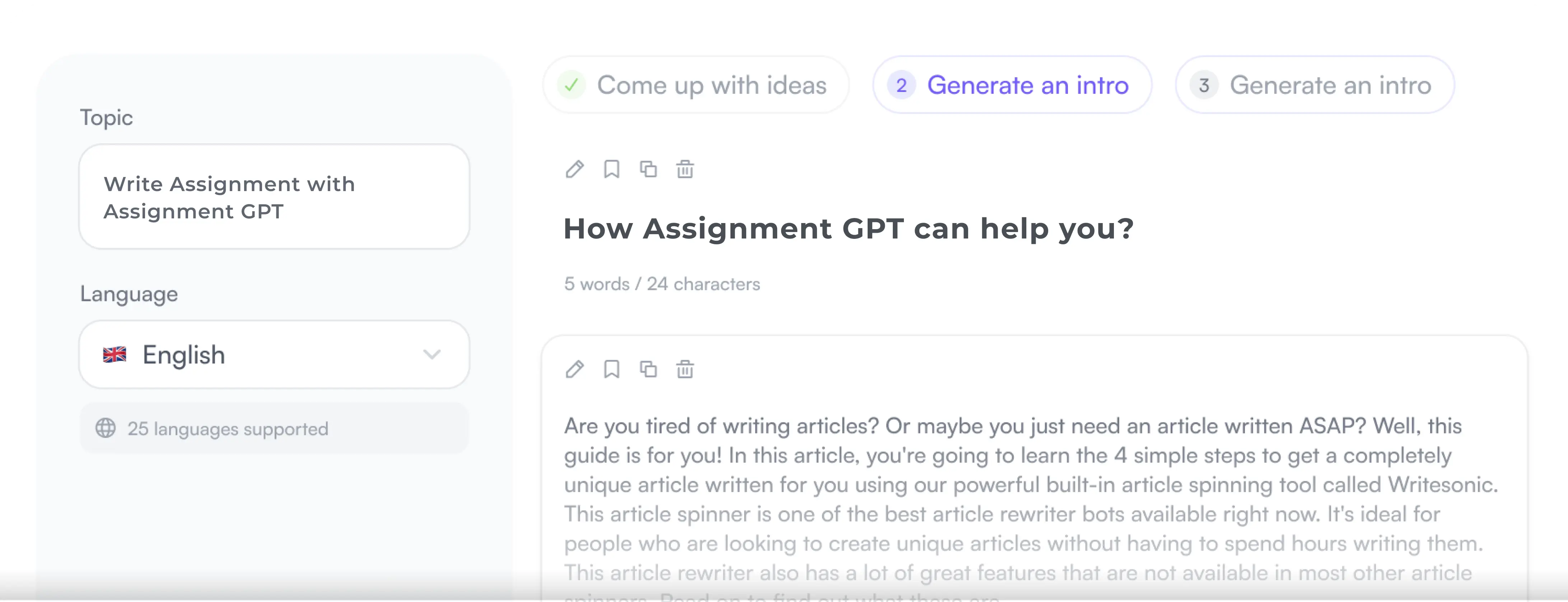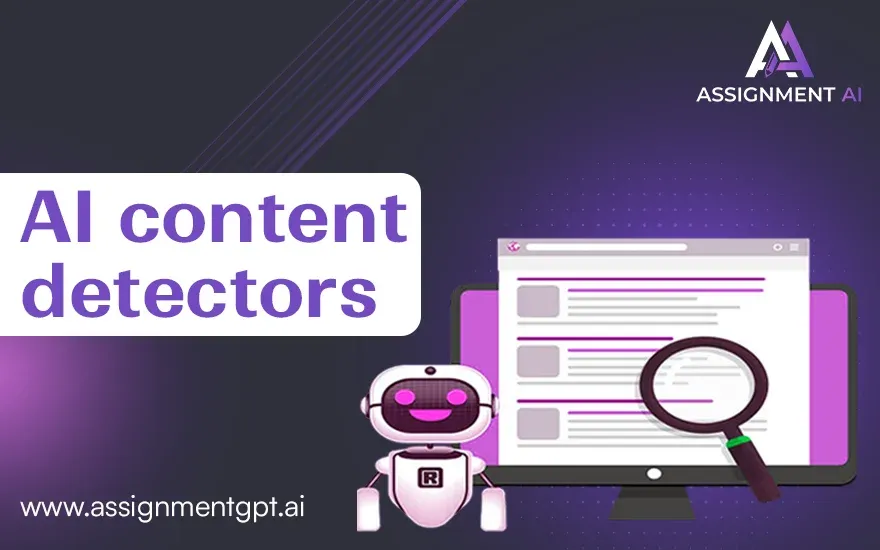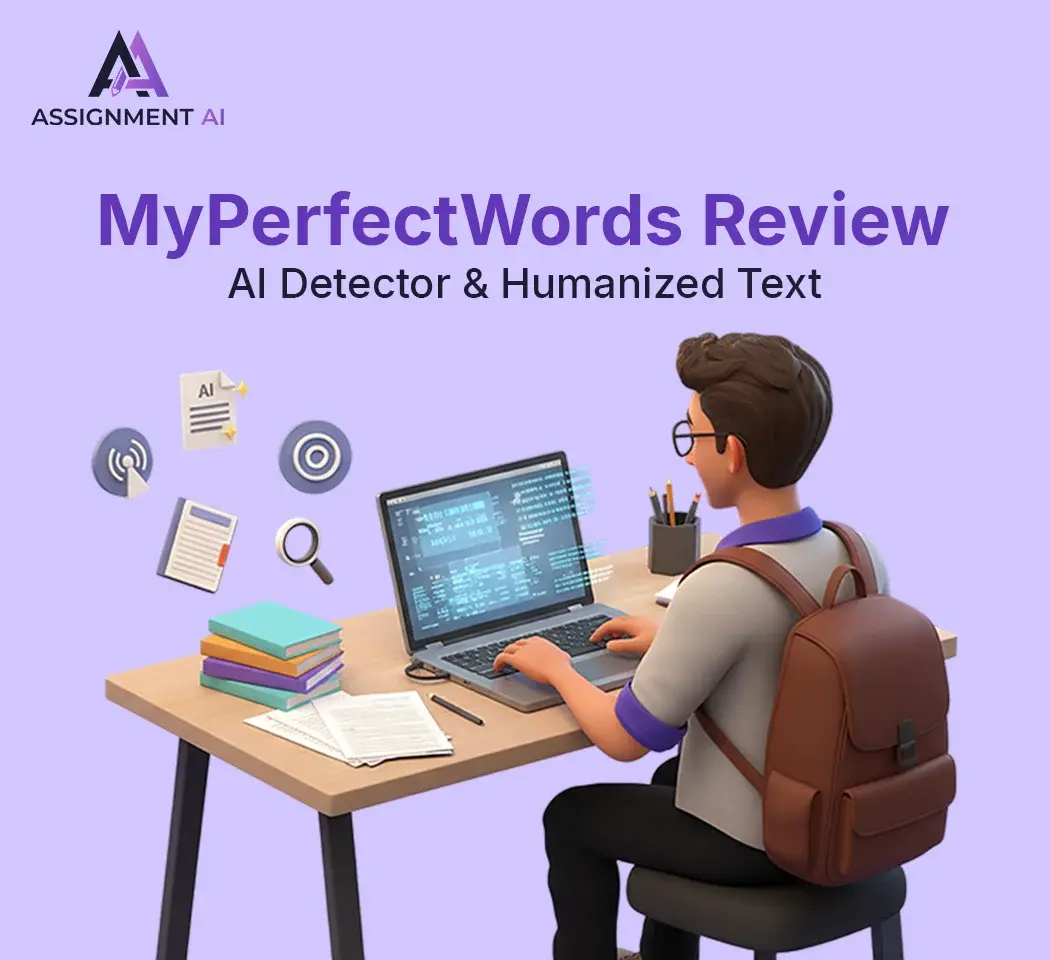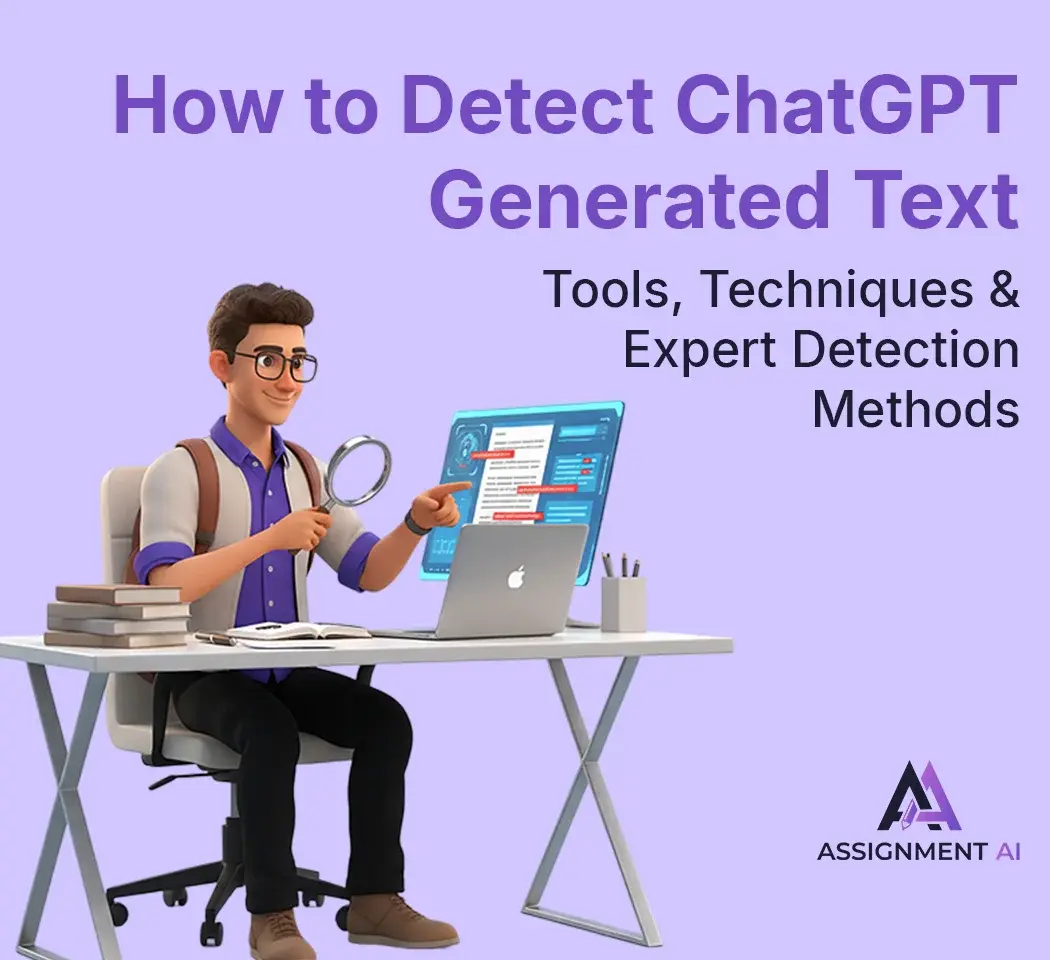AssignmentGPT Blogs
Ever heard of Nyke, Adibas, Ribok?
Yes, those local counterfeit products that look the same but aren’t the real deal. How do you determine if a given cloth is authentic or not? You’ll examine the label, the sticker and the barcode. Maybe also check the texture of the cloth.
You performing a mini quality check is basically what AI content detectors do. They scour a given piece of content to see whether it has been written originally or not. To do this, these detectors have certain measures and procedures in place.
Let’s learn more about AI content detectors, and how AI detectors work.
Quick Summary
We’ll be discussing these AI content detectors today, giving you an idea of how they function and how they benefit you.
AI Content Detection Tools Components and Functionality
AI content detection tools have some core components that power the magic within them. These components help detect the sprinkles of AI in content, helping you reveal the problem areas.
Let’s break down the essential building blocks of AI, and answer the ‘how does AI detection work’ question.
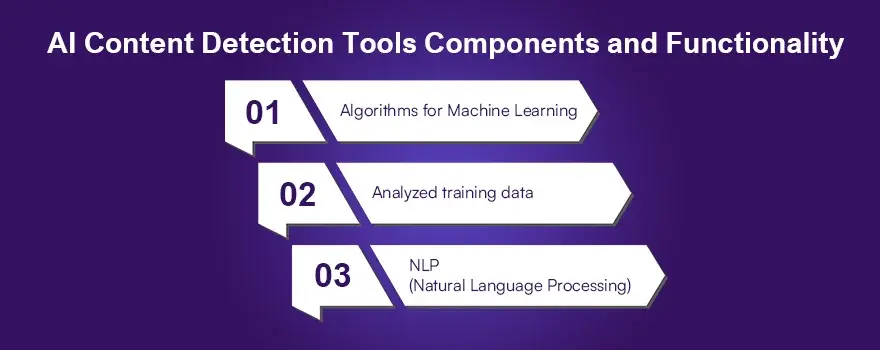
1. Algorithms for Machine Learning
Machine learning is integral for AI content detection. Let’s understand this through an example:
Imagine teaching a child how to recognize a cat by showing them hundreds of different pictures of animals. Feed them with the ideal characteristics of a cat beforehand, maybe show them some samples.
Soon enough, the child will get better at identifying what makes a cat, a cat. Machine learning works in a similar manner. It helps [spot patterns and signals](spot patterns and signals) in text that suggest that it was written by a machine.
2. Analyzed training data
Training data analysis is another building block of AI content detectors.
An AI content is as good as the sample data that you provided it with. You need to find out high-quality human as well as AI data, and then feed it into the AI content detectors for sampling.
Think of it as a “diet” of essays, articles, social media posts, and AI-written scripts, all analyzed to help the tool make distinctions.
Good data will help you in getting super-accurate results. While AI content detectors can be absurdly wrong, sometimes even flagging a fully authentic piece of content as AI – it's because the samples that it was provided with simply weren't good enough. Understanding how to choose the best AI detection tool can help avoid these issues.
3. NLP (Natural Language Processing)
As we understood earlier, ML gives AI content detection tools brainpower.
Now, NLP allows these tools to understand the text beyond its surface structure. It understands the syntax, grammar, semantics and even emotional undertones. NLP helps recognize whether the flow and context feels human or not.
Is there a natural feel? Is there a human touch? Or does it feel too boring or too perfect?
NLP helps answer these questions and helps flag the content accordingly.
Also read this article : 11 Best AI Detection Tools & Checkers in 2024
The Benefits of AI Detection Tools
We now know what goes into making AI content detection tools, and how do AI detectors work. Now, let’s move on to exploring the various benefits that come with them.

1. Integrity in academics
AI tools help maintain a specific level of authenticity in the field of education.
With students thinking that using AI to complete their assignments and dissertation is a 'good option,' it differs from reality. Universities are increasingly asking can universities detect ChatGPT text to maintain academic standards. In reality, academic endeavours can be bettered with AI rather than fully replacing them with AI-generated content.
Here’s where AI detection tools come into play. They carefully assess a piece of content to see whether it is written by humans or not. And this can make a world of difference for teachers and professors that want to make sure that their students use AI in a positive way.
2. Detection of fake news
The internet has interconnected the world.
But, it has also fostered a sense of trust. That if something is published on a webpage or on social media – it becomes true. Today, deepfakes and morphed images run rampant, but so do articles and posts that seem to be true – but are false.
Now, these articles can either be written by humans or simply generated by machines. So, news agencies and social media platforms regularly monitor content to see whether it is authentic or not.
Because even fake content requires a good amount of time and energy to write, and it is now more likely that a fake article can be AI-generated. This highlights why AI content detection matters for education and media integrity.
They’ll be giving you that extra layer of protection when it comes to flagging AI content.
3. Verification of social media content
You’ll rarely see a person without any social media account.
According to DOMO, 2,500,000,000,000,000,000 (2.5 quintillion) bytes of data is shared on social media every day!
Imagine verifying every piece of content to see whether it is authentic or not – sounds impossible, right? But, we can still verify the content that we come through.
This is where AI detection tools excel. They’ll be giving you that much needed verification advantage, helping you verify authenticity.
4. Protection of brands
The integrity of a brand’s voice is essential and non-negotiable.
Our AI friends (or foes) can generate content that mimics brand messages in ways that damage the brand. So, AI detection tools help brands make sure that the content that’s being put out under their name is genuine and human written.
This works when you’re looking to see if published content is not boring and disengaging, rather it connects with the hearts of the audience.
5. Assurance of quality
AI doesn’t have a track record of providing top-end quality.
Rather, it provides content that usually doesn’t engage well. The draft that AI provides will most likely have to be edited by a human, so that it could feel human-like in nature.
But, AI detection tools help here. By identifying the parts that sound way too AI-generated, these tools help you in identifying which parts of the content you need to humanize. Understanding AI detection score meaning can help interpret these results better.
6. Editing of content automatically
AI detectors can also suggest what changes you can make.
This helps, as you not only have line-to-line identification, but also suggestions available for the same. This feature is not available in all of the detectors out there – but some offer this.
This is sort of an extra step, as AI content detectors usually only do the job of detecting content, not suggesting them. This helps in humanizing the parts that sound way too generic/machine-like.
7. Credibility Enhancement
Credibility is important – especially in a world where anyone can publish content.
All of the top businesses, academic institutions and media outlets can use AI detection tools to show their content is genuinely human-driven or not. This helps in building trust, reinforcing an organization’s commitment to quality and authenticity.
And content detector tools can determine what percentage of a given piece of content is human-written, and what percentage of it is AI-written. Many wonder can ChatGPT be detected with such precision
Conclusion
That’s pretty much for today’s blog.
With what AI content detector tools offer in terms of accountability, checking and safeguarding – these have become essential tools of today. We went through the advantages of AI detector tools.
AI content would roam free if it weren’t for these detectors that provide line-by-line identification (and suggestions too). And with AI content popping up everywhere, finding good tools is quite a task. Our comprehensive review of AI checker tools for teachers can help in this selection process.
Don’t worry, AssignmentGPT has you covered. You can detect AI with our tool in the most accurate manner possible.
Check it out now by clicking here!
FAQs
1. What is an AI content detector?
2. Can AI content detectors flag human-written content by mistake?
3. Can AI detectors help improve the quality of content?
Content writer at @AssignmentGPT
Kandarp’s world is powered by conversations, content, and creativity. With experience across branding, literature, publishing, and strategy, he has helped shape identities and stories for businesses across industries. At AssignmentGPT AI, he leads a team that blends sharp content, strong design, and local insight to turn businesses into brands that connect with people.
Master AI with
AssignmentGPT!
Get exclusive access to insider AI stories, tips and tricks. Sign up to the newsletter and be in the know!

Transform Your Studies with the Power of AssignmentGPT
Empower your academic pursuits with tools to enhance your learning speed and optimize your productivity, enabling you to excel in your studies with greater ease.
Start Your Free Trial ➤Start your success story with Assignment GPT! 🌟 Let's soar! 🚀
Step into the future of writing with our AI-powered platform. Start your free trial today and revolutionize your productivity, saving over 20 hours weekly.
Try For FREE ➤